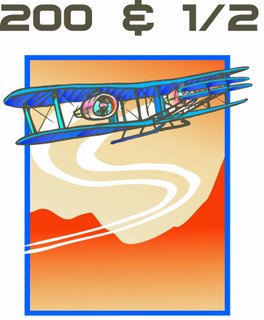It was my first real flying job after being an instructor. Part 135 cargo, flying an SUV, single pilot, IFR, at night, in the mountains for Diamond Air. I found myself doing the things on a regular basis that I told my former students never to do.
I was hired in early August, the hottest time of the year in New South Montucky, where afternoon temps routinely reached the upper 90’s and lower 100’s well into September. Heavy cargo loads, coupled with high temps, high density altitude and an old tired airplane made for a steep learning curve for me.
As summer turned to fall, and fall to winter I quickly became comfortable with the route, the airplane and its quirks. I was really enjoying myself having finally settled into my groove. I was used to the airports and their intricacies. I had shot the approaches to the airports on the route and I had even created a low weather visual arrival, and an instrument departure from the
My first real test of the winter flying came with the second winter storm of the year.
The weather began to deteriorate shortly after I landed in
The ASOS weather report at
Two weeks prior, during the first winter storm, I found myself in this exact position. I was cleared for the VOR approach. I crossed the VOR, followed the procedure turn out bound and intercepted the final approach course that took me through the pass. After the pass the approach dives into the mountainous bowl down to the MDA.
Even though the weather was reported at minimums, I saw the airport about 3 miles out and was able to land, load my freight and take off w/out incident (or a missed approach)
…but I had been here before. Piece of cake. I passed the VOR and descended to the MDA. As the DME clicked down to the missed approach point, I quickly realized that I was going to miss this approach! Omigosh! I’m going to miss this approach! My first actual, by God missed approach!! How could this happen? It’s not ‘supposed to happen this way! This was not how I planned this night to go! What am I going to do? Fly the plane! Oh yeah, fly the plane.
I suddenly realized that I wasn’t flying the plane. I was just kind of there in a daze marveling at the fact that I was missing this approach. Coming back to reality, I found myself .5nm passed the missed approach point. Not good considering I was surrounded by cumulogranite, and making no attempt to rectify the situation.
I added power, retracted the flaps and the gear and began my climbing left turn back to the VOR, praying to God that I would get out of this situation alive without hitting a mountain. That would suck.
Leveling the wings in the climb I started to catch up mentally with the aircraft. All the gauges looked good. Manifold pressures, oil pressure and temps were good…hmmm. What about ice? I tuned on the wing inspection light. Everything looked good, but what was that? (insert Windows ‘something bad just happened’ sound here)
I’M ON FIRE!! Peering through the louvers on the top of the nacelle, I can look directly into the engine compartment. I saw a fiery red hot, almost white glow. That’s not fire. What is that? Oh, crap!! That is my turbo charger!! I’ve never seen it before like this. Why is it like that? What the hell is going on? Oh shiite! Mixtures! They are still at a lean cruise setting! I jam the mixture forward as I again begin to pray that molten chunks of the turbine wheel are not flowing their way to my intake valves. That would be a day wrecker.
As I began to enter the hold, the bright light that once radiated out of the nacelles had turned to a dark, almost imperceptible red glow as the added fuel began to help cool the engine. I decided that I wasn’t in the mood to try the approach again and asked ATC to join the airway home, to
I spent the rest of the flight watching St, Elmo’s fire dance across the wind screen fretting, and wondering if I had just baked two good engines. If I had, it would be a very expensive mistake, to the tune of about 60 grand. I wondered if I would have job, if I did in fact bake them. They seemed to be running ok, but that didn’t mean much to me at the time.
Nesting out of the airplane, and trudging to the office I noticed the chief pilot was working late. I decided I had better self disclose and take my lumps now rather than later. I told him of the situation. He reassured me that what I saw was normal and that it was unlikely that I had done any damage to the engines or turbos. He would have the maintenance guys check it out, but doubted they would find anything wrong.
“Chock it up to experience and remember it for next time”, he said, and sent me on my way.
Kind of a crappy way to learn a lesson. However, in the end, the lesson was learned, no aircraft were bent, and no lives were lost. The only thing bent was my pride and the only thing that wasn’t lost was an opportunity to learn.

2 comments:
Good story- takes some guts to share that kind of thing!
BTW, the expression is "chalk it up," as in tally it on a slate.
"BTW, the expression is "chalk it up," as in tally it on a slate."
Right you are dear reader! But, it is much more phun to use a homophonic aviation term! Pun intended.
Post a Comment